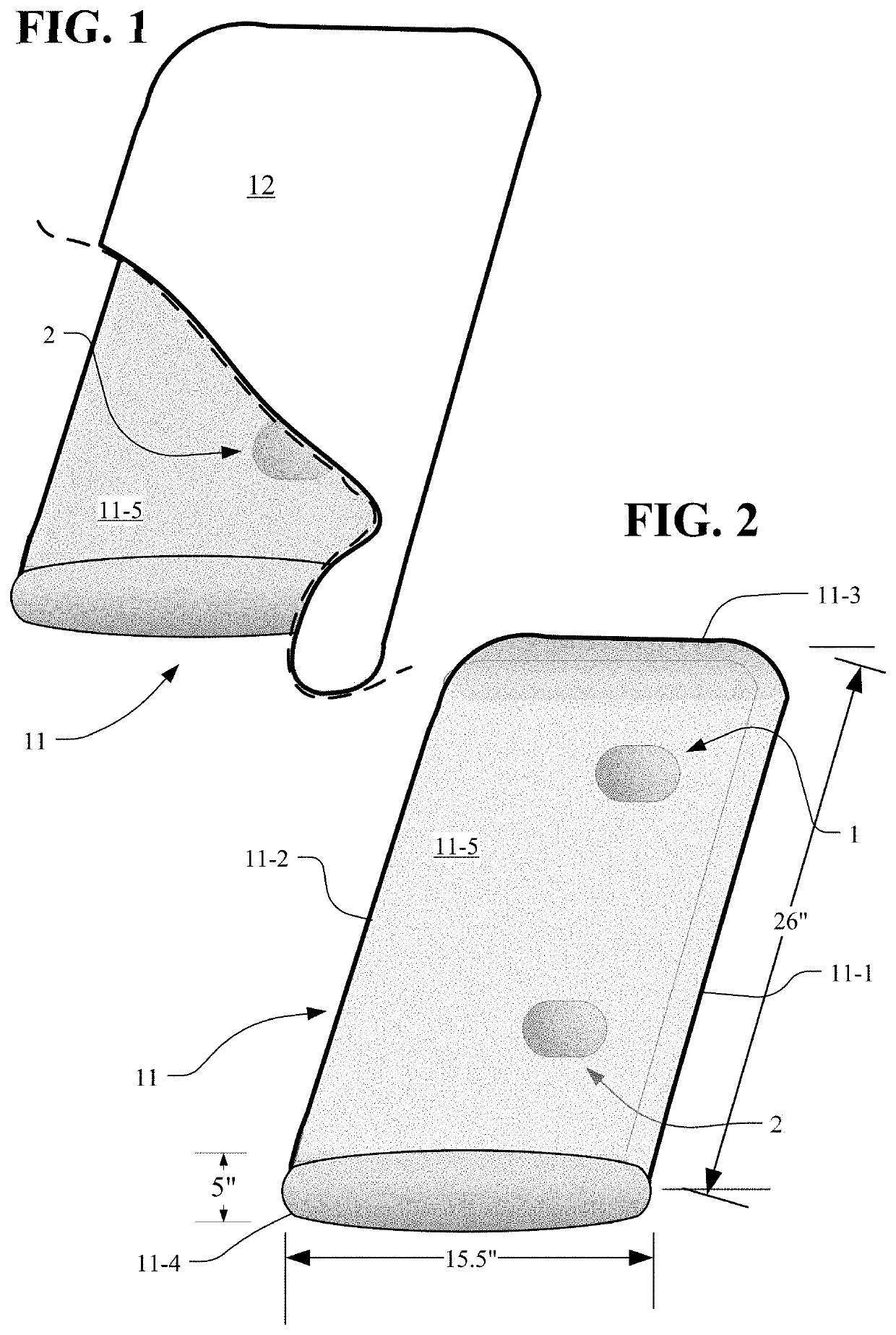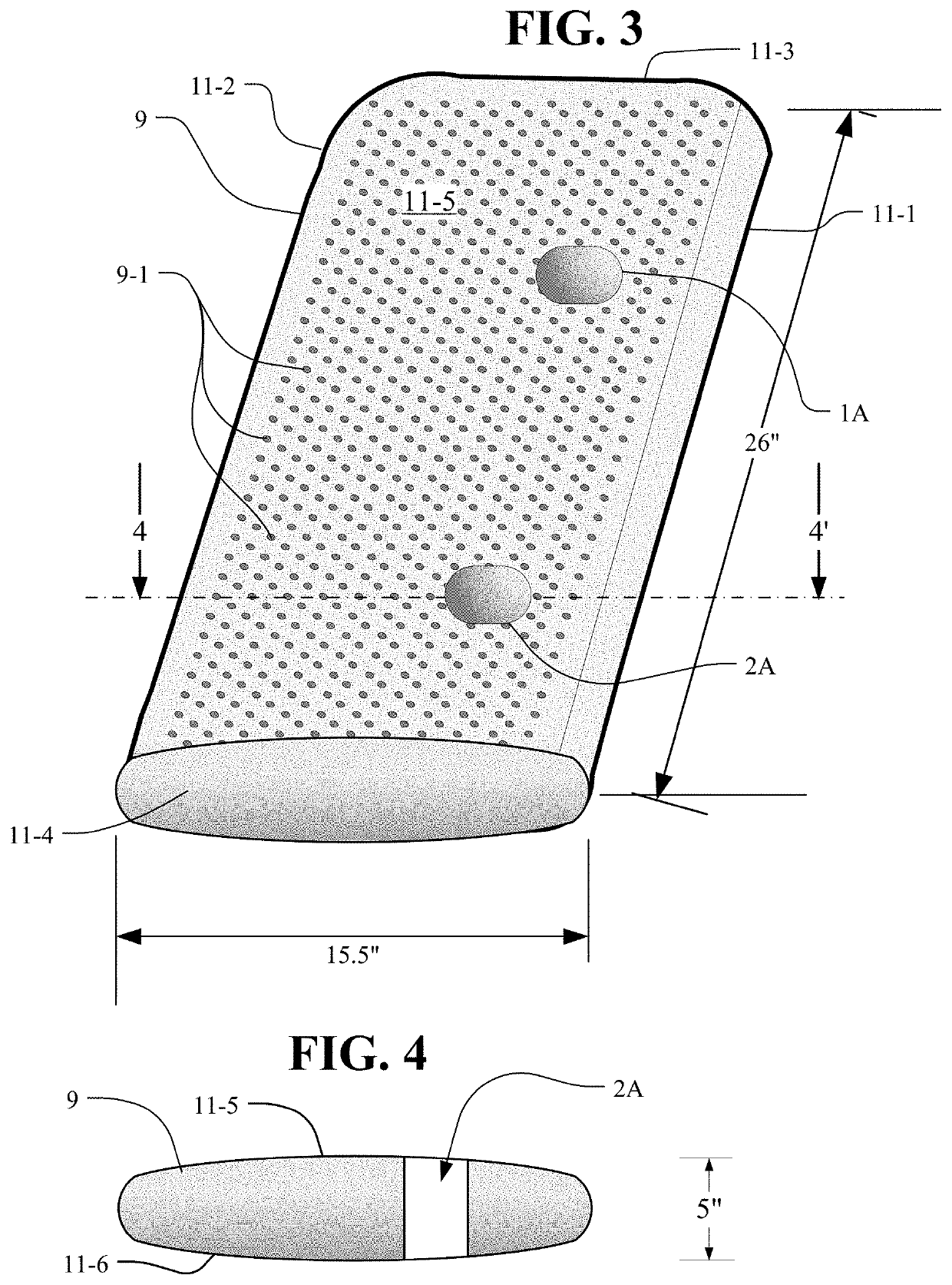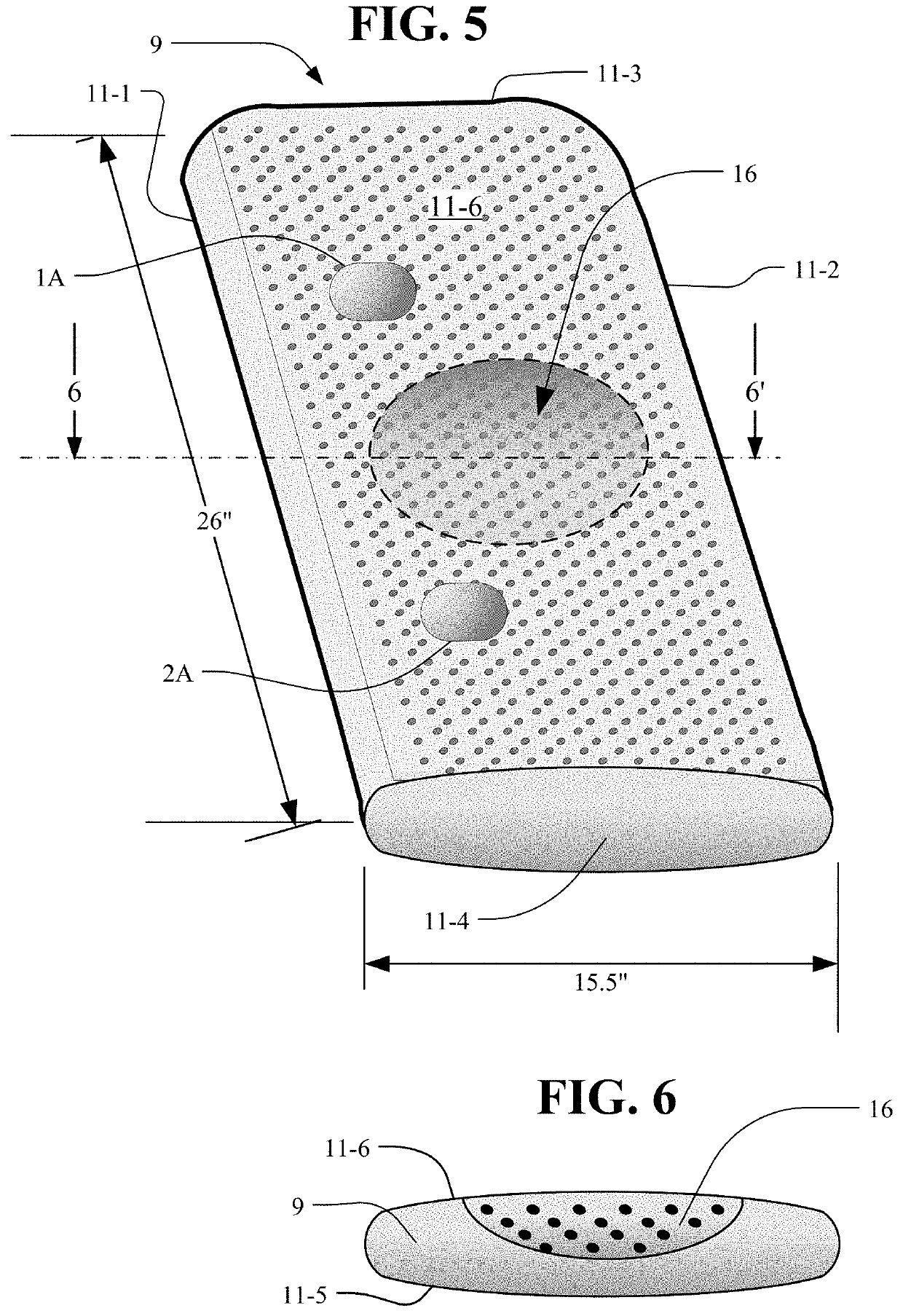Pillows in common use for many years have a number of limitations.
The downward force and pressure caused by the weight of a person's head and neck on
facial tissue and
facial skin in contact with such pillows is considerable, causing local stretching, reduction or cessation of capillary
blood flow and deformation of the
skin.
Similarly, the outer surfaces of the ears are crushed by the weight of the head when a person using a pillow lies to the side, contributing to cessation of capillary blood flow and the incidence of bacterial and fungal ear infections,
morning wax deafness, ear ache and gradual deformation and wrinkling of the pinna (the
outer ear formed of
cartilage covered by skin) and sleep disruption due to forced position change.
In addition, existing pillows provide uneven support to the head and neck causing muscular strain of the neck and back and causing general night unrest.
This tendency can accelerate degener- ation of the spine associated with
ageing, particularly in the neck region, even causing reflected
back pain and degradation extending down to the
lumbar region.
Indeed,
neck injury and pain commonly result from improper support while sleeping.
Similarly, in an attempt to match personal
anatomy to a pillow, many people adopt unnatural sleeping positions with arms and hands used to provide head support, which leads to discomfort and joint degeneration, and even
arthritis, in the hands, elbows and shoulders.
Although a variety of pillow sizes and shapes are available, they often do not match an individual's
anatomy and natural sleep habits.
While U.S. Pat. No. 6,006,380 in some respects has desirable features, pillows marketed with such features have had a non-standard appearance resulting from a contoured shape and a narrow width.
While such pillows attempted to support the head and neck with adequate musculoskeletal position and alignment, the irregular appearance, the overly firm and non-washable material, the high cost and other problems made such pillows unsatisfactory.
However, the irregular appearance, the overly firm and non-washable material, the high cost and other problems made such pillows unsatisfactory.
However, the irregular appearance, the overly firm and non-washable material, the high cost and other problems made such pillows unsatisfactory.
Although the user may initially find a comfortable position, the normal turning of a user during sleep causes the musculoskeletal position, alignment and pressure to become distorted and uncomfortable.
The resulting discomfort interferes with the user's quality of sleep.
The supposed benefits of the pillow are lost and do not achieve a comfortable musculoskeletal position, alignment and pressure that last through the night or other
sleep period.
Furthermore, the foam pieces of different sizes and irregular shapes tend to form pressure points that press against the
soft tissue portions of the face and head causing wrinkles and redness of the skin.
Although that pillow is low cost, washable, and regular in appearance, that pillow does not have the beneficial features described in U.S. Pat. No. 6,006,380.
Although that pillow is soft, washable, and regular in appearance, that pillow does not have the beneficial features described in U.S. Pat. No. 6,006,380.
Shifts due to discomfort caused by beds or pillows are a significant cause of
poor sleep quality.
There are two major causes of
bed-induced shifting, and particularly pillow-induced shifting, which cause
poor sleep.
As it relates to the head and pillow, the first major cause of shifting is the buildup of pressure on the part of pillows which are too thick or too hard.
High compression tends to
restrict capillary blood flow which is recognized by the body, after a period of time, as discomfort.
When parts of the body are subjected to pressures above the ischemic threshold, discomfort results and, hence, a person shifts to remove the discomfort and
threat to
tissue damage.
Considering the second major cause of shifting, poor body alignment results from bending of the
vertebral column of the body.
As it relates to the head and pillow, such bending is typically caused by poorly functioning mattresses and pillows that cause unwanted improper and distorting alignment of the neck and head in one or more sleeping positions, that is, poor muscu- loskeletal position and alignment occurs.
When these positions are not achieved, a distorting and unnatural alignment occurs causing discomfort.
Also, the extended
head position causes wrinkling across the front of the neck and under the
chin.
The result is a distorting alignment causing discomfort and other unwanted consequences.
The skin, particularly in women wanting delicate and smooth skin features, is susceptible to wrinkling.
Facial tissue is particularly susceptible to wrinkling and worsens with aging.
None of the pillows presently known provide the desired musculoskeletal position, alignment and pressure together with softness index and other features preferred by customers or contributing to their sleep and health.
In the unnaturally upward and forward condition, the
cervical spine is distorted which allows intervertebral discs to compress asymmetrically producing the likelihood of bulging discs which may impinge upon nearby nerves and cause numbness and pain.
 Login to View More
Login to View More  Login to View More
Login to View More 


